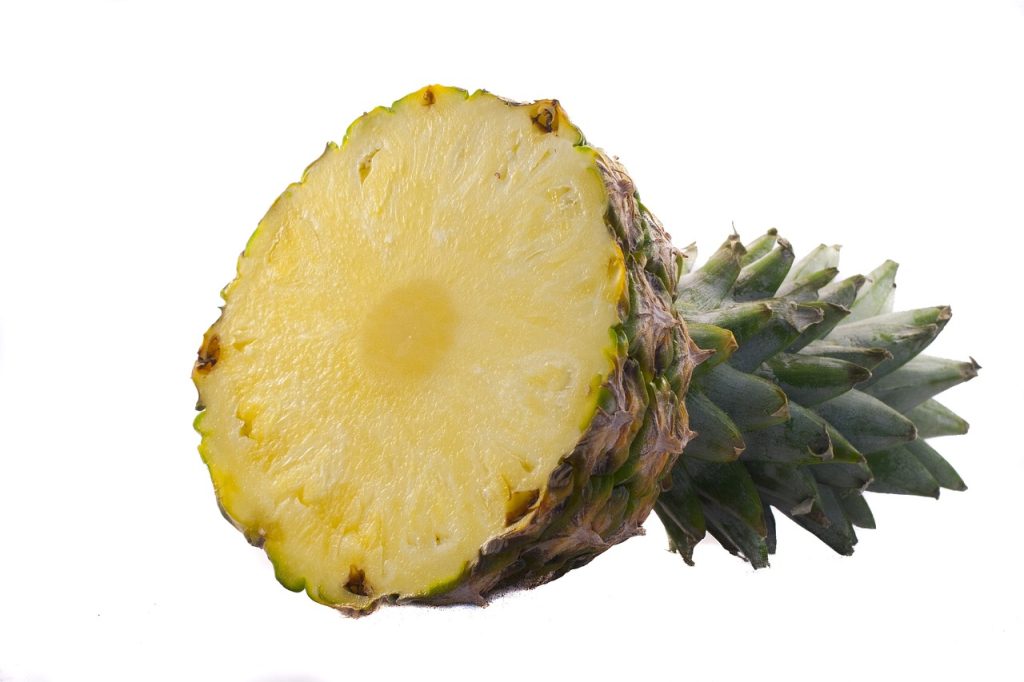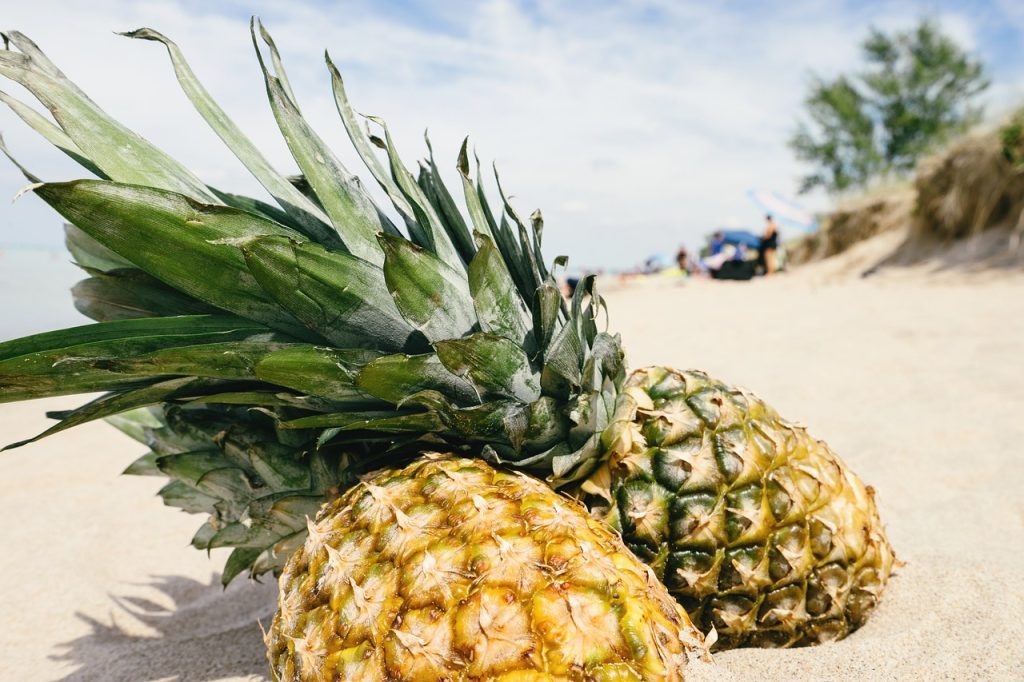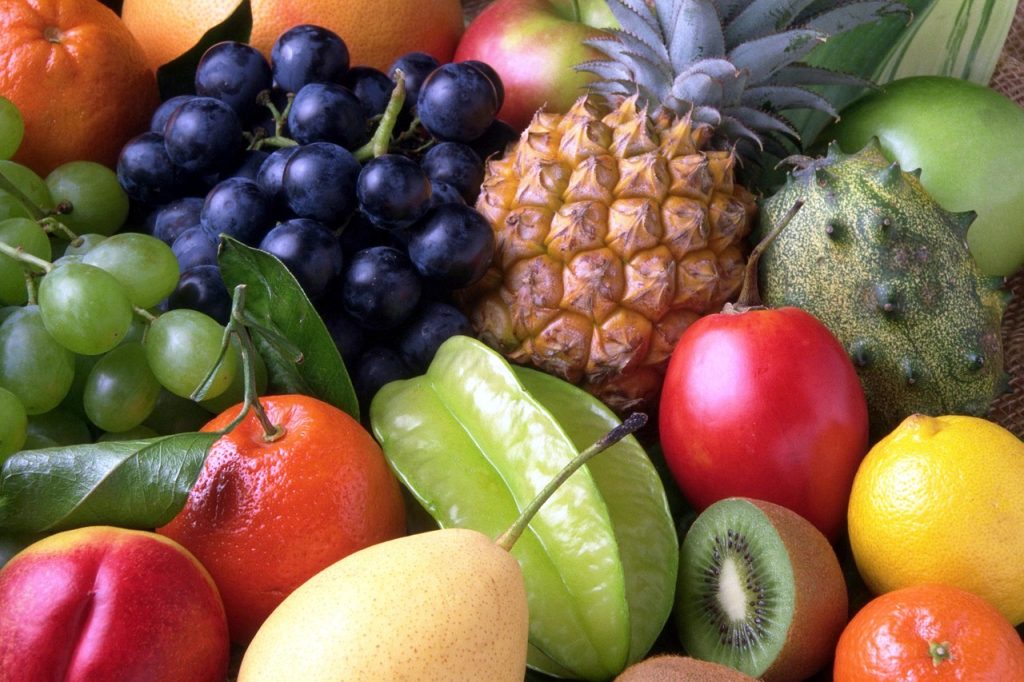Is Pineapple Low FODMAP? Know How to Enjoy The Tropical Fruit!
Pineapple is a delicious tropical fruit loved by many for its juicy, refreshing taste. You might be wondering if pineapple is low FODMAP and safe to consume if you’re following a low FODMAP diet to manage digestive issues, such as Irritable Bowel Syndrome (IBS).
Great news for pineapple lovers! Pineapple is indeed considered low FODMAP in moderate quantities. You can enjoy this delightful fruit as part of your diet without having to worry about triggering any unpleasant symptoms.
Just remember to consume it in moderation and savor the sweet flavors and health benefits it has to offer.
Is Pineapple Low FODMAP?

Yes, Pineapple is considered a low FODMAP fruit which means it contains fewer fermentable carbohydrates that can trigger digestive problems in some individuals.
When you’re on a low FODMAP diet, it’s important to be mindful of portion sizes. For pineapple, a safe serving size is 1 cup of fresh pineapple. This amount should provide you with the sweet and tangy flavor you love without causing any gastrointestinal discomfort.
Health Benefits
Pineapple is not only delicious but also provides various health benefits. It’s rich in vitamins, antioxidants, and enzymes that can help boost your immune system, promote healthy digestion, and even reduce inflammation in the body.
So, while you enjoy this low FODMAP fruit, know that you’re also doing something good for your overall health.
Pineapple Nutrition Table (per 100g):
| Nutrient | Amount |
|---|---|
| Calories | 50 kcal |
| Protein | 0.54g |
| Fat | 0.12g |
| Carbohydrates | 13.12g |
| Fiber | 1.4g |
| Sugars | 9.85g |
Glucose, Fructose and Excess Fructose per Serving Suggestion Table (per 100g):
| Sugar Type | Amount (grams) |
|---|---|
| Glucose | 2.1g |
| Fructose | 1.7g |
| Excess Fructose | 0g |
If you’ve never tried pineapple on a low FODMAP diet, start with a small serving and monitor how your body reacts.
Fresh vs Canned Pineapple

Now that you know that pineapple can indeed be a part of your low FODMAP diet, there are some differences to consider when choosing between fresh and canned pineapple.
Fresh Pineapple
First, let’s talk about fresh pineapple. In its natural form, pineapple contains enzymes that can help aid digestion, making it a great option for those with IBS.
In fact, according to Monash University, a serving size of 140g (1 cup) is classified as low FODMAP. This means you can enjoy fresh pineapple in moderation without worrying about triggering your IBS symptoms.
Canned Pineapple
On the other hand, canned pineapple might require a bit more caution. The canning process may cause changes to the fruit, and manufacturers often add sugar or syrup to preserve it.
These added sugars could increase the FODMAP content, making canned pineapple potentially less suitable for those with IBS. To minimize the impact on your diet, it’s best to choose canned pineapple that’s packed in water or its own juice, rather than syrup.
Keep in mind that a smaller serving size of 1/2 cup (75g) of canned pineapple is recommended for maintaining a low FODMAP balance.
Serving Sizes and FODMAP Thresholds
Just like with any other food, the right portion size of pineapple can make a difference in whether it triggers your IBS symptoms or not. The FODMAP content of a food is often determined based on the typical serving sizes, which can vary among individuals.
Stay Within Your Limits
To enjoy pineapple as part of a low FODMAP diet, you should be mindful of your personal serving size limits. Staying within these limits can help you maintain a balanced diet and minimize the risk of IBS flare-ups.
Keep in mind that everyone’s tolerance to FODMAPs is different, and it takes some trial and error to find your optimal portion size.
Consider Your Overall FODMAP Load
Along with serving sizes, another critical factor for FODMAP thresholds is the combination of foods you consume. When following a low FODMAP diet, it’s important to pay attention to the overall FODMAP load of your meal.
Try mixing low-FODMAP foods with moderate-FODMAP foods within your meals to ensure that you don’t exceed the threshold for triggering symptoms.
By finding the right balance, you can enjoy a wide variety of nutritious, delicious foods, including pineapple, without aggravating your IBS.
Related: Is Jackfruit Low FODMAP
Tips for Including Pineapple in Your Diet

To enjoy pineapple as part of your low FODMAP diet, here are some tips:
1. Choose Fresh Pineapple
Opt for fresh pineapple when possible. Fresh pineapple contains fewer FODMAPs than canned variants, as canned pineapple can have higher FODMAP levels due to added sugar or syrup. Additionally, fresh pineapple usually has a better taste and texture.
2. Serve it in Various Ways
Add pineapple to your meals in different ways to keep it interesting. You can mix pineapple chunks with your favorite breakfast yogurt or smoothie, create a sweet salad with pineapple and cucumber, or even grill pineapple slices as a side dish for your BBQ.
3. Pay Attention to Portion Sizes
While pineapple is a low FODMAP fruit, consuming too much can still lead to digestive problems for some people. Be mindful of portion sizes – the suggested serving size for fresh pineapple is about 1 cup (or 150g) per meal.
4. Pair Pineapple with Other Low FODMAP Foods
Combining pineapple with other low FODMAP ingredients can make your meal more enjoyable and well-rounded. For example, you can blend pineapple with strawberries and bananas for a low FODMAP smoothie, or top a homemade pizza with pineapple chunks and FODMAP-friendly cheese.
Also Read: Is Cinnamon Low FODMAP?
Frequently Asked Questions
How much pineapple is high FODMAP?
Pineapple is considered low FODMAP when consumed in moderation. The general recommendation is to limit your serving size to 1 cup (about 140 grams) per meal or snack to keep it within the low FODMAP range.
Consuming more pineapple than that could lead to high FODMAP levels, potentially causing digestive distress for those sensitive to FODMAPs. Remember to listen to your body and adjust the serving size according to your individual tolerance level.
What are the lowest FODMAP fruits?
Bananas, strawberries, kiwi, oranges, lemons, and limes are some of the lowest FODMAP fruits.
Is papaya low FODMAP?
Papaya is low FODMAP if you eat no more than 1 cup serving of ripe papaya.
Conclusion – Is Pineapple Low FODMAP?
Yes, when eaten in moderation, pineapple can be a low FODMAP diet.
However, individual tolerances to FODMAPs can vary, so not everyone with digestive issues will be affected by pineapple in the same way.
If you’re uncertain about how pineapple affects your digestive system, it’s best to consult with a registered dietitian or healthcare professional who can provide personalized advice and guidance based on your specific needs.

Jane Porter is an architect that like many others, had her life significantly impacted by digestive problems for many year. Trying to find a solution to her digestive problem, she came across the low FODMAP diet, a scientifically-backed approach designed to alleviate symptoms associated with irritable bowel syndrome (IBS) and other digestive disorders.







